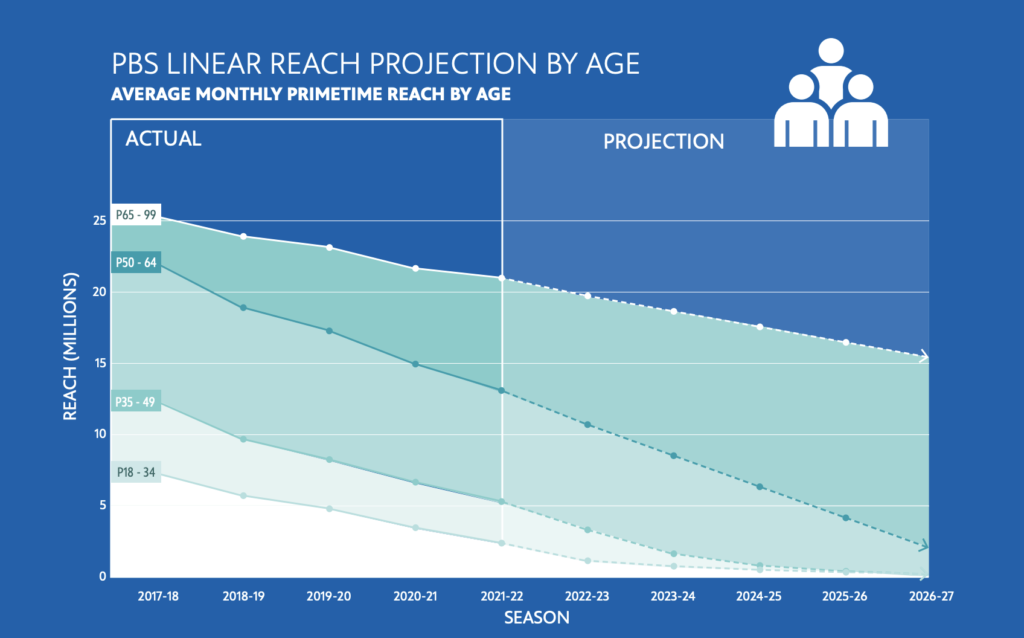America’s public television broadcaster predicts its 18-49 prime time audience will drop to ZERO within three years…

By Paul Marszalek
TheTop22.com
If you’re feeling down about how tough things are in radio, thank your lucky stars you’re not in television. In particular, Public Television.
According to PBS’ own research, the broadcaster’s 18-49 prime time audience will effectively drop to zero in the 2026-2027 season. Even the 50-64 year-old crowd will drop below 5 million in the same period.
While there is conversion of audience to its on-demand Passport and digital options, it’s happening fast enough to make up for the exodus.
The chart below, taken from PBS Audience Insights 2022, tells the alarming story…

While those throughout the PBS system are aware of the problem, it appears that there is no holistic plan to address it. Instead, it’s largely more of the same — British imports, period costume dramas, and tweaks in the margins.
The wagon-circling is so tight that those not associated with PBS or a public television station are actually prohibited from attending their annual conference. Public media, both radio and television, is notorious for operating as a gated community. Over time, the obstruction of outside views and ideas collectively cripples innovation, much less large scale disruptive strategies.
Will radio suffer a similar fate? Hopefully not.
Like their television counterparts, public radio execs are ringing the alarm bells on audience bleed, which shows that as much as 20% of the pre-pandemic audience has not returned.
Analyses from the Radio Research Consortium, a meta-analysis by the Station Resource Group/PRPD, and Greater Public, a blocking and tackling refresher from Izzy Smith, and a new initiative intended to find new, adjacent audiences from Jacobs Media and Mark Ramsey, are combining to give public radio execs a firm representation of reality.
Efforts to identify audience segments and getting back to execution basics will definitely help to slow the melt of the audience ice cube. But in truth, they’ll only get public radio back to the starting line.
Problem is, the 20% of the audience that has left since the pandemic is unlikely to come back — at least not to your station’s current product. Similarly, newly identified adjacent audiences currently have no reason to join the public radio fold.
And this is where it falls apart: Public media, the occasional podcast aside, is generally pretty bad in terms of launching sustainable new products. It is very difficult to identify a successful launch of a new program in the past five years – at radio or TV.
Imagine if HBO or Netflix tried that.
Public media needs to go into customer acquisition mode, and this will require the creation of new products and awareness campaigns to support them. Public media is not particularly good at either. Further, institutions tend to have deeply ingrained resource allocation processes, which lead to risk aversion. But this is when disruptive strategies are needed most.
During the pandemic, I went back to school to study product development, disruptive strategy, design thinking, and DEI — all with an eye toward creating new and better media products.
I’m happy to share what I’ve learned and help you unlock the value within your organization.
When you’re ready to create new products or otherwise move the needle, don’t hesitate to reach out.
 -The Top 22 – Triple A, Indie, Alternative Rock
-The Top 22 – Triple A, Indie, Alternative Rock

